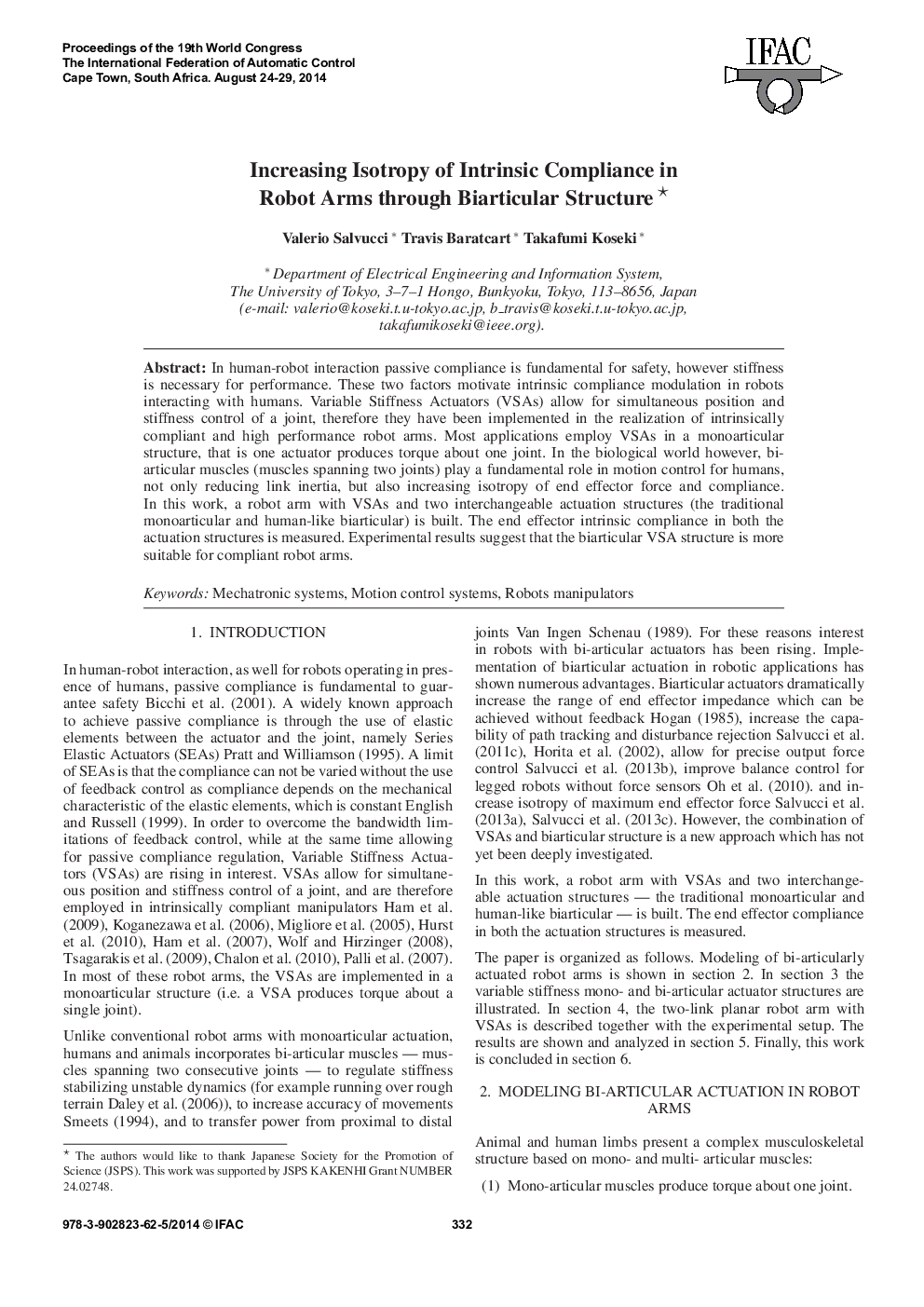| Article ID | Journal | Published Year | Pages | File Type |
|---|---|---|---|---|
| 712174 | IFAC Proceedings Volumes | 2014 | 6 Pages |
In human-robot interaction passive compliance is fundamental for safety, however stiffness is necessary for performance. These two factors motivate intrinsic compliance modulation in robots interacting with humans. Variable Stiffness Actuators (VSAs) allow for simultaneous position and stiffness control of a joint, therefore they have been implemented in the realization of intrinsically compliant and high performance robot arms. Most applications employ VSAs in a monoarticular structure, that is one actuator produces torque about one joint. In the biological world however, bi-articular muscles (muscles spanning two joints) play a fundamental role in motion control for humans, not only reducing link inertia, but also increasing isotropy of end effector force and compliance. In this work, a robot arm with VSAs and two interchangeable actuation structures (the traditional monoarticular and human-like biarticular) is built. The end effector intrinsic compliance in both the actuation structures is measured. Experimental results suggest that the biarticular VSA structure is more suitable for compliant robot arms.
